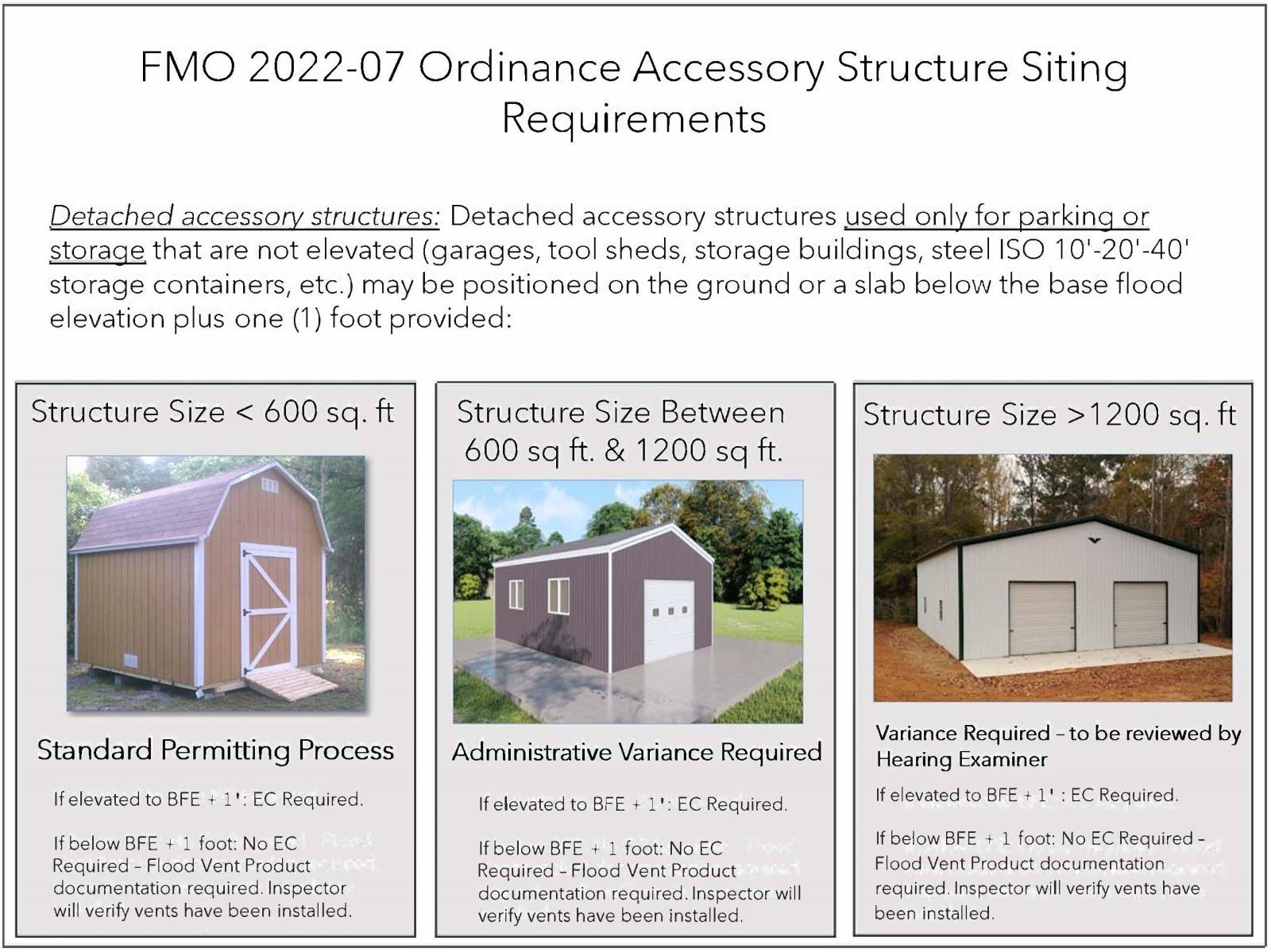In February 2020, FEMA released FEMA Policy #104-008-03, a policy defining accessory structures and agricultural structures and specifying conditions and limitations that must be imposed when communities allow property owners to build those structures using wet floodproofing techniques instead of complying with the NFIP requirements to elevate or dry floodproof nonresidential structures. The Code of Federal Regulations–44CFR 60.3(c)(3)(i)(ii) enacted in 1976, requires all new construction and substantial improvement of non-residential structures in flood hazards have the lowest floor elevated to or above the base flood elevation, or together with attendant utility and sanitary facilities, be designed so that below the base flood elevation the structure is watertight with walls substantially impermeable to the passage and with structural components having the capability of resisting hydrostatic and hydrodynamic loads and effects of buoyancy.
Though this requirement has been established for many years, communities nationwide participating in the NFIP have not enforced it. It has been a common practice for communities to allow for the construction of nonresidential structures below the base flood elevation incorporating wet floodproofing, rather than complying with the requirements set forth in the Code of Federal Regulations. FEMA Policy #104-008-03 outlines the requirements communities must adhere to when permitting structures incorporating wet floodproofing to the building design. Communities must now require the completion of a variance to allow at-grade wet floodproofed accessory and agricultural structures.
In May of 2021, The Florida State Floodplain Management Office began assisting communities with amending their local floodplain management ordinances to include these changes. This guidance included model language and a regulatory process framework the community can implement in response to the Policy to allow at-grade wet floodproofed accessory structures. This new criteria does offer benefits to the property owner. Structures to be sited at-grade utilizing wet floodproofing will no longer be required to submit an Elevation Certificate as part of the permitting process.
